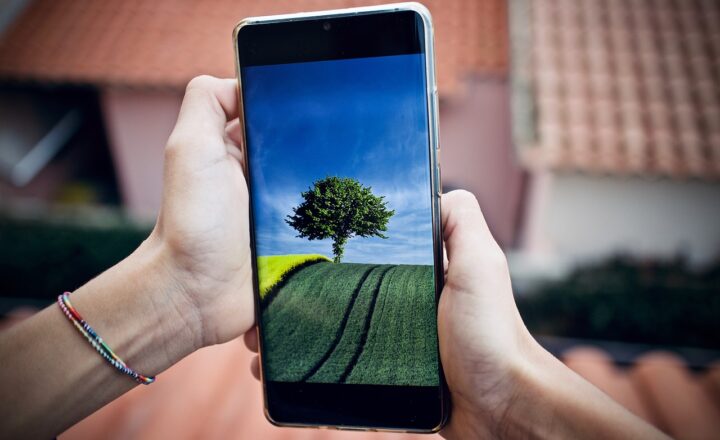
The evolution of mobile phones has morphed dramatically over the last two decades. While today’s smartphones dominate the market with advanced capabilities and sleek designs, several iconic mobile phones paved the way for these innovations. One such device is the Nokia N95, renowned for its remarkable features and significant impact on the mobile phone industry. In this article, we explore the unforgettable attributes of the Nokia N95 and other memorable mobile phones that defined an era.
1. The Birth of Multimedia Smartphones
The Nokia N95, launched in 2007, is often viewed as one of the first true multimedia smartphones. Unlike its predecessors, which primarily focused on voice calls and text messaging, the N95 combined various functionalities that would soon become standard in mobile devices. Its introduction of a 5-megapixel camera, high-resolution display, and multimedia playback capabilities redefined what users expected from their phones.
– Multimedia Features: The Nokia N95 was equipped with music and video playback, allowing users to store and enjoy multimedia content on-the-go. Its incorporation of a high-quality camera transformed the way people documented their lives, enabling high-resolution photography and videography.
– Dual Slide Design: The N95’s innovative dual slide design provided users with quick access to multimedia controls and a full QWERTY keyboard for texting and emailing. This design was futuristic and practical at a time when most phones were limited in functionality.
2. Game-Changing Connectivity
The Nokia N95 made waves not just for its features but also for its ability to keep users connected. At a time when 3G technology was just emerging, the N95 supported multiple connectivity options:
– 3G and Wi-Fi Enabled: The N95 was one of the first mobile phones to offer both 3G connectivity and Wi-Fi capabilities, changing the communications landscape. Users could browse the web, download files, and connect with friends without relying solely on their mobile networks.
– GPS Navigation: Another revolutionary feature was the built-in GPS system. The N95 allowed users to navigate and explore new areas, which laid the groundwork for the navigation apps we now take for granted in today’s smartphones. The introduction of mobile navigation sparked a significant shift in how people explored their environments.
3. Unforgettable Design and Usability
Design plays a crucial role in the popularity and longevity of a mobile device. The Nokia N95 was no exception:
– Sleek and Stylish: The N95 featured a modern and sleek design, highlighted by its glossy finish and ergonomic shape. Users appreciated its lightweight build, which made it easy to carry. The lasting aesthetic appeal is one reason it continues to be fondly remembered today.
– User Interface Experience: The operating system utilized by the N95 was intuitive and user-friendly, which allowed users to access applications with ease. This emphasis on usability helped solidify its place in mobile tech history, as many manufacturers began to take notice and improve their user interfaces.
4. The Legacy of the Nokia N95 and Other Iconic Phones
The Nokia N95 was part of a lineage of remarkable mobile phones that shaped the evolving landscape of communication technology:
– BlackBerry Curve: Known for its physical keyboard and secure messaging capabilities, the BlackBerry Curve appealed predominantly to business users who prioritized email communication. It was pivotal in creating the smartphone market targeted at professionals.
– Apple iPhone (2007): Just a few months after the N95’s release, Apple introduced the iPhone, which revolutionized mobile technology with the introduction of the App Store and the focus on a touch interface, spurring a new wave of smartphone design.
– Motorola Razr: Renowned for its fashion-forward clamshell design, the Razr was immensely popular during the mid-2000s. It symbolizes how aesthetics can also drive the success of a device, ultimately paving the way for modern smartphones.
Each of these devices played their part in assisting consumers in their daily lives while signaling to manufacturers what features would be crucial in forthcoming designs.
5. The Enduring Impact on Today’s Smartphones
It’s no surprise that many features introduced by the Nokia N95 and other iconic phones can be found in modern smartphones:
– Integrated Cameras: Today’s smartphones come equipped with multiple high-quality cameras, with technologies like portrait mode, night mode, and 4K video capabilities, originating from the push towards better camera quality in earlier devices.
– Advanced Connectivity Enhancements: Fast internet speeds, GPS navigation, and seamless app interactions, collectively improve user experiences on modern devices. The N95 set a precedent for the expectation of constant connectivity.
– User-Centric Designs: The push for aesthetic and touch interface design in modern smartphones owes much to the influence of design-focused innovations made by the N95 and similar devices.
The legacy left by the Nokia N95 and its peers transcends their era, showcasing that innovation is not just about introducing new technology, but also enhancing user experiences and meeting evolving needs.
Conclusion
In conclusion, the Nokia N95 stands as a landmark device in mobile phone history. Its legacy, alongside iconic phones like the BlackBerry Curve, Apple iPhone, and Motorola Razr, demonstrates how innovations in design, functionality, and connectivity have paved the way for today’s smartphones. As we continue to embrace technological advancements, we owe a debt of gratitude to these iconic phones that shaped the way we communicate, work, and live.
Understanding their features not only highlights their significance but also reminds us of the rapid evolution within the mobile industry, where each advancement builds upon the past to create devices that are increasingly integrated into our lives.







